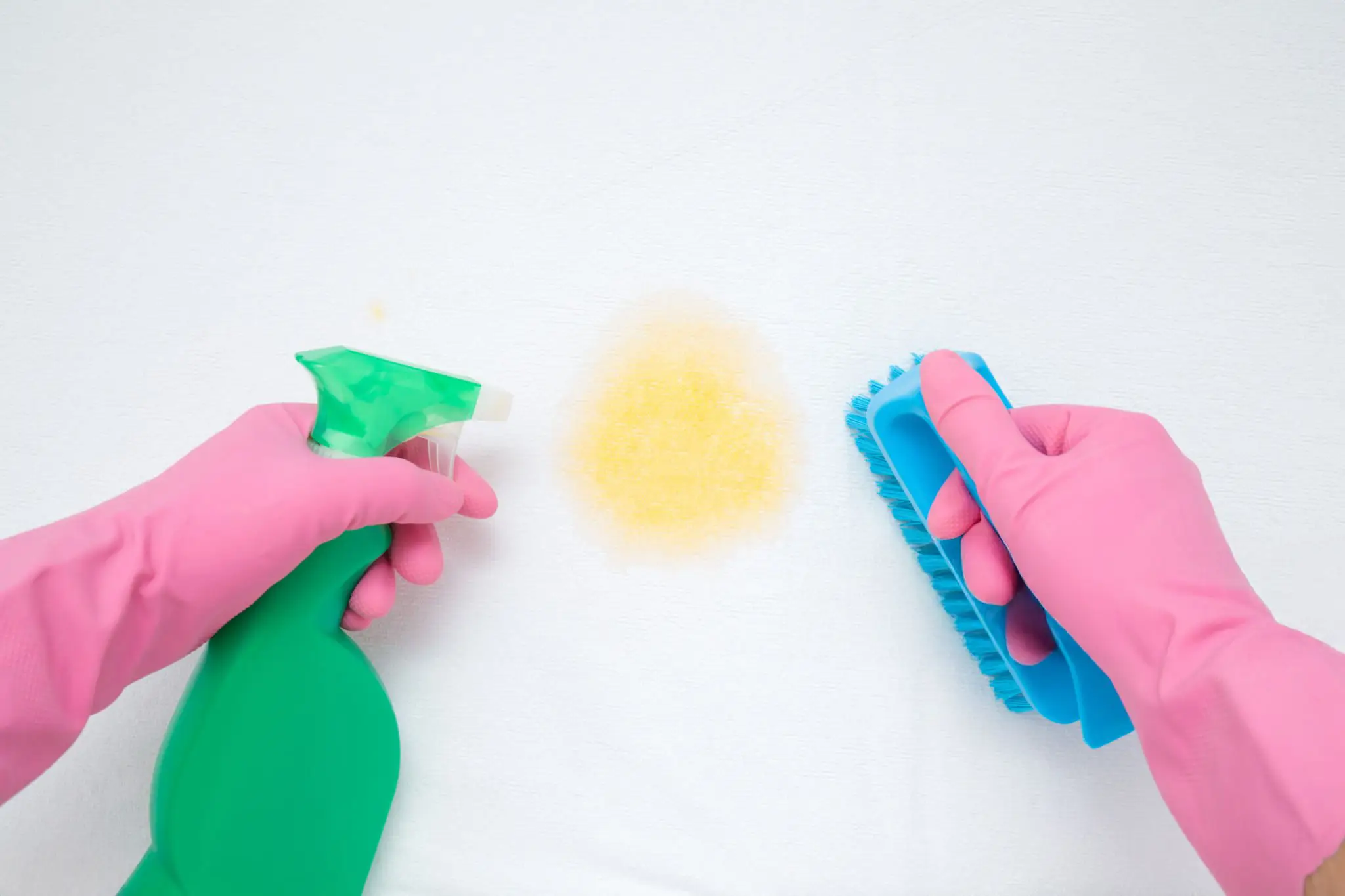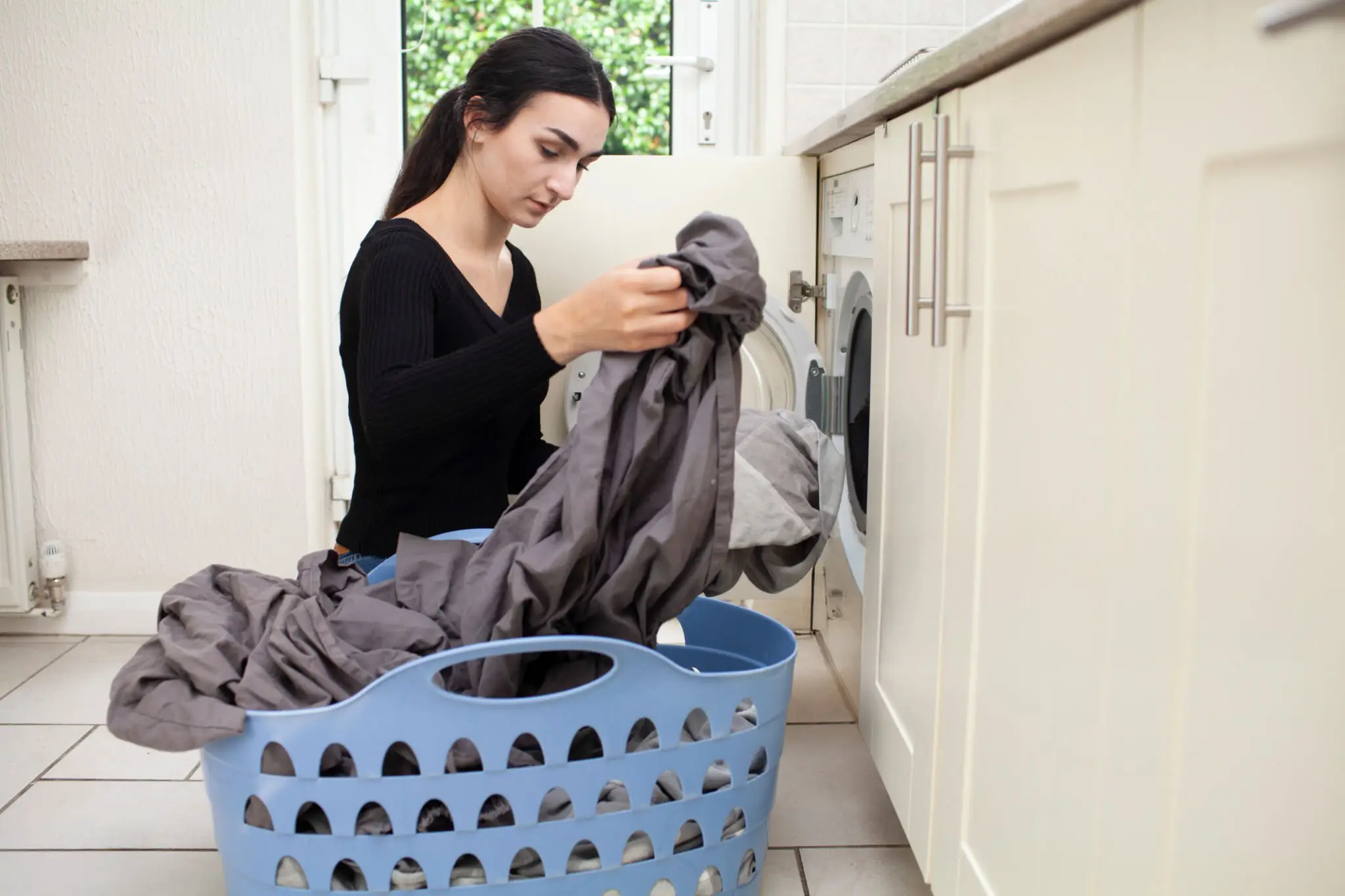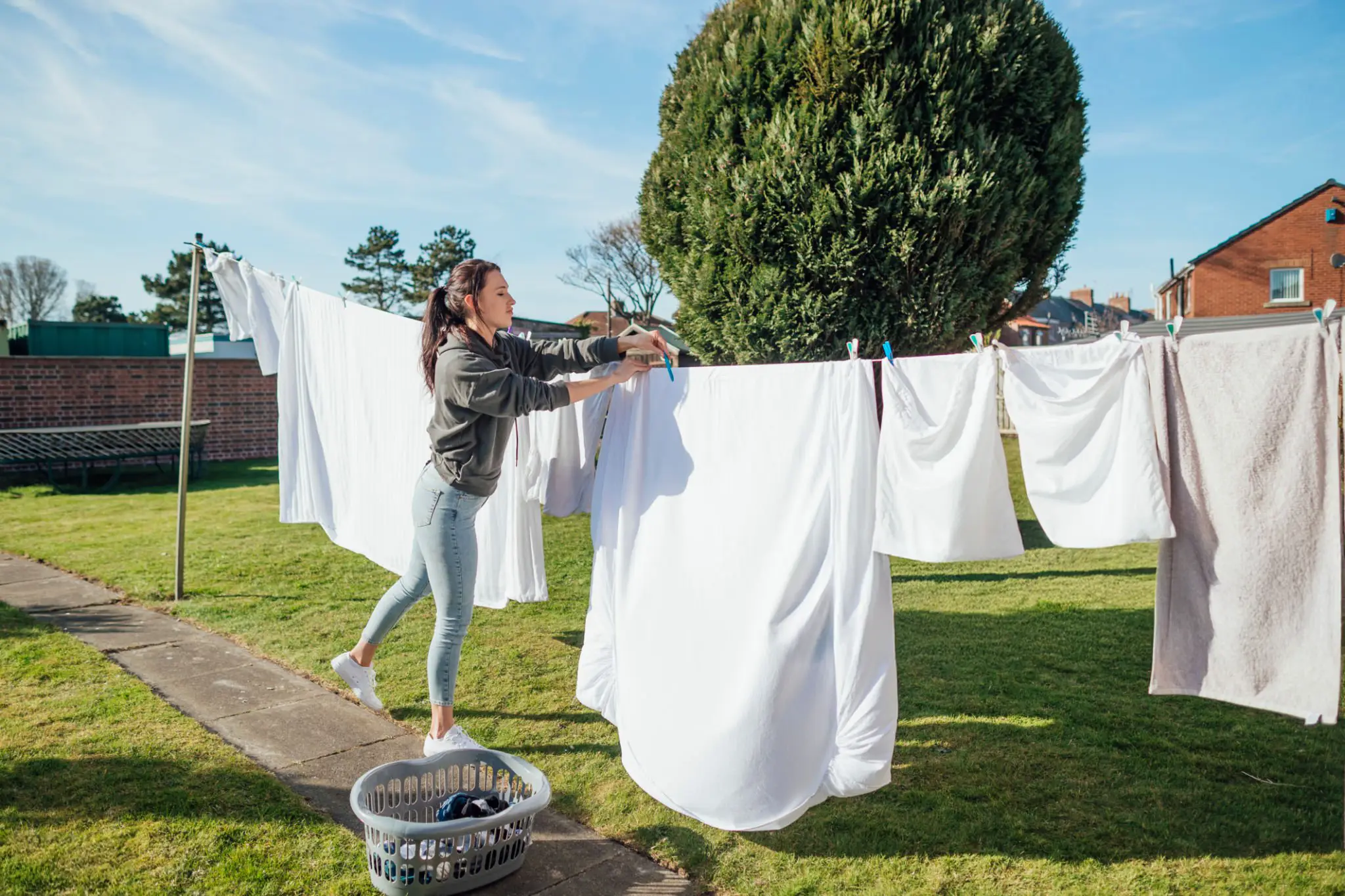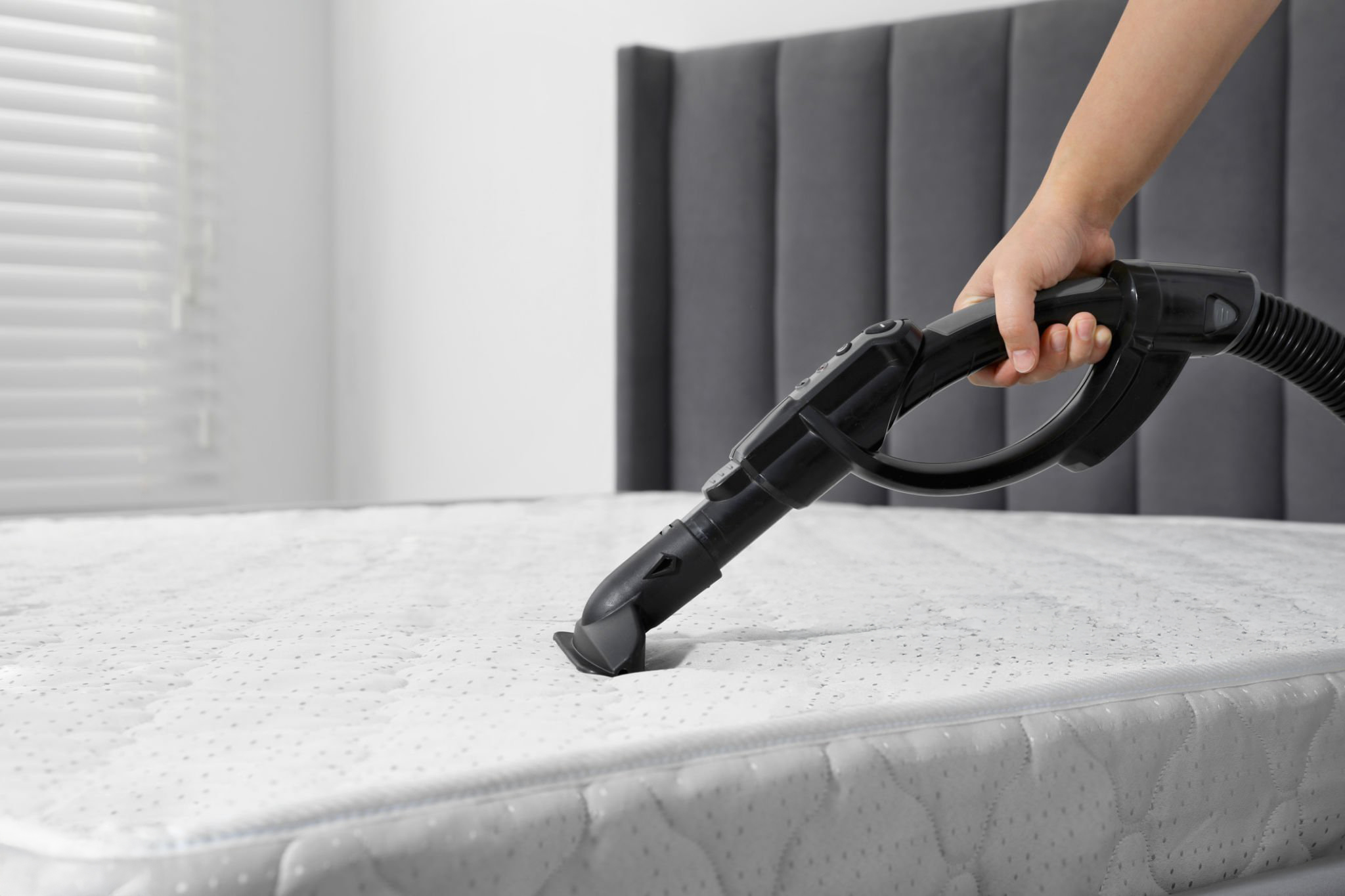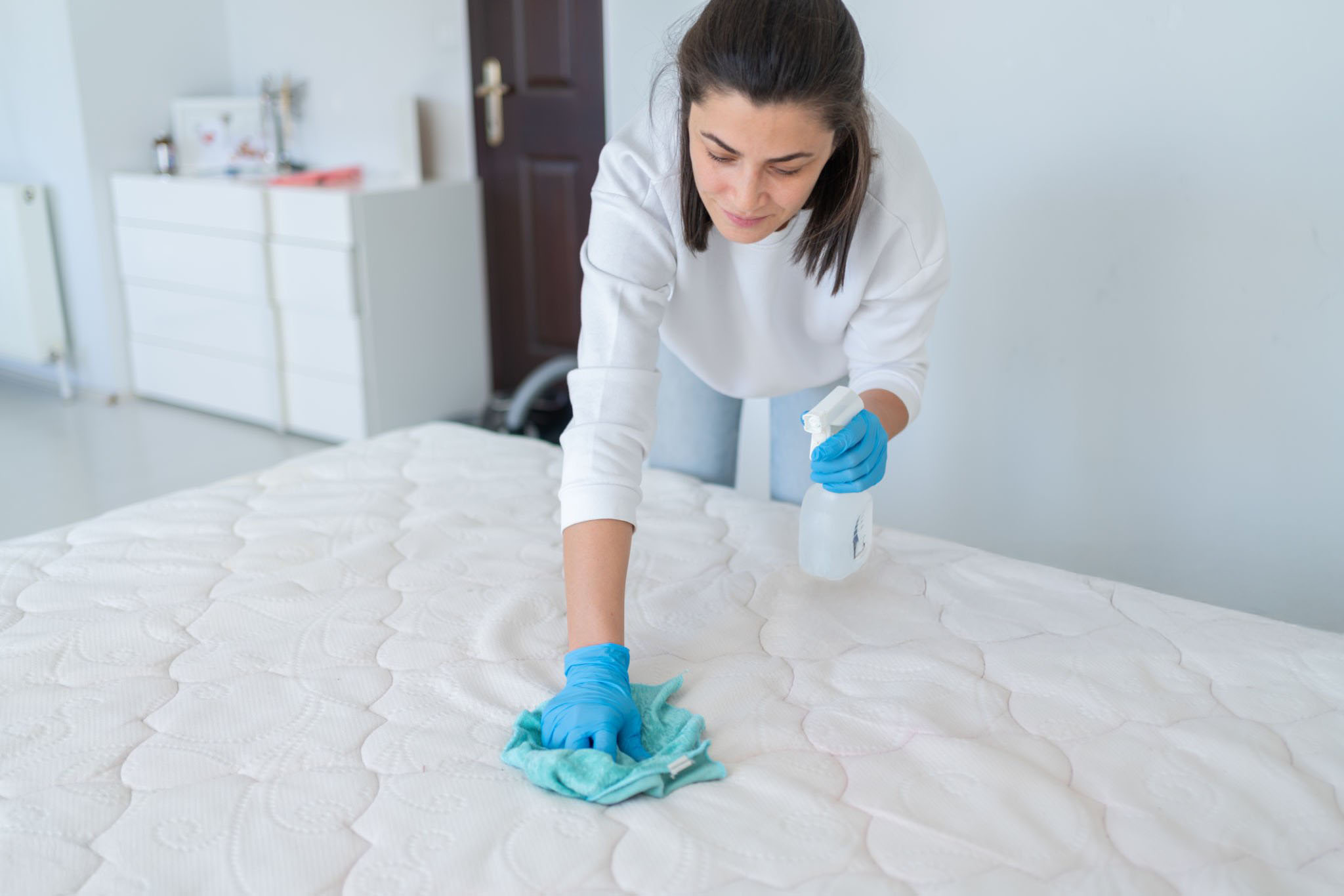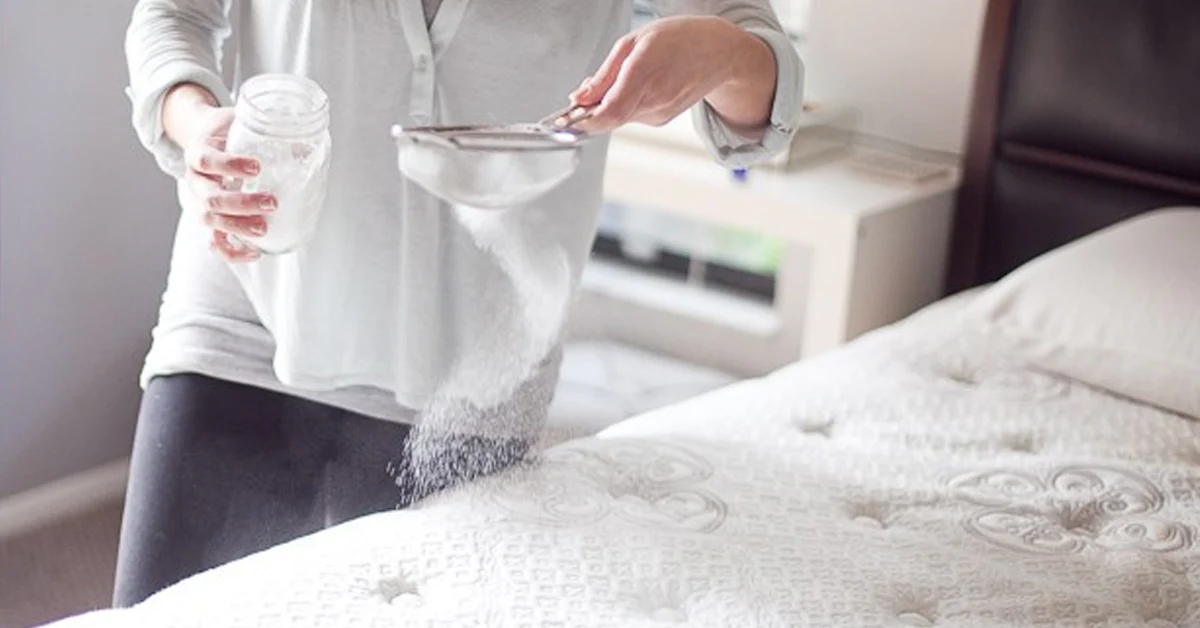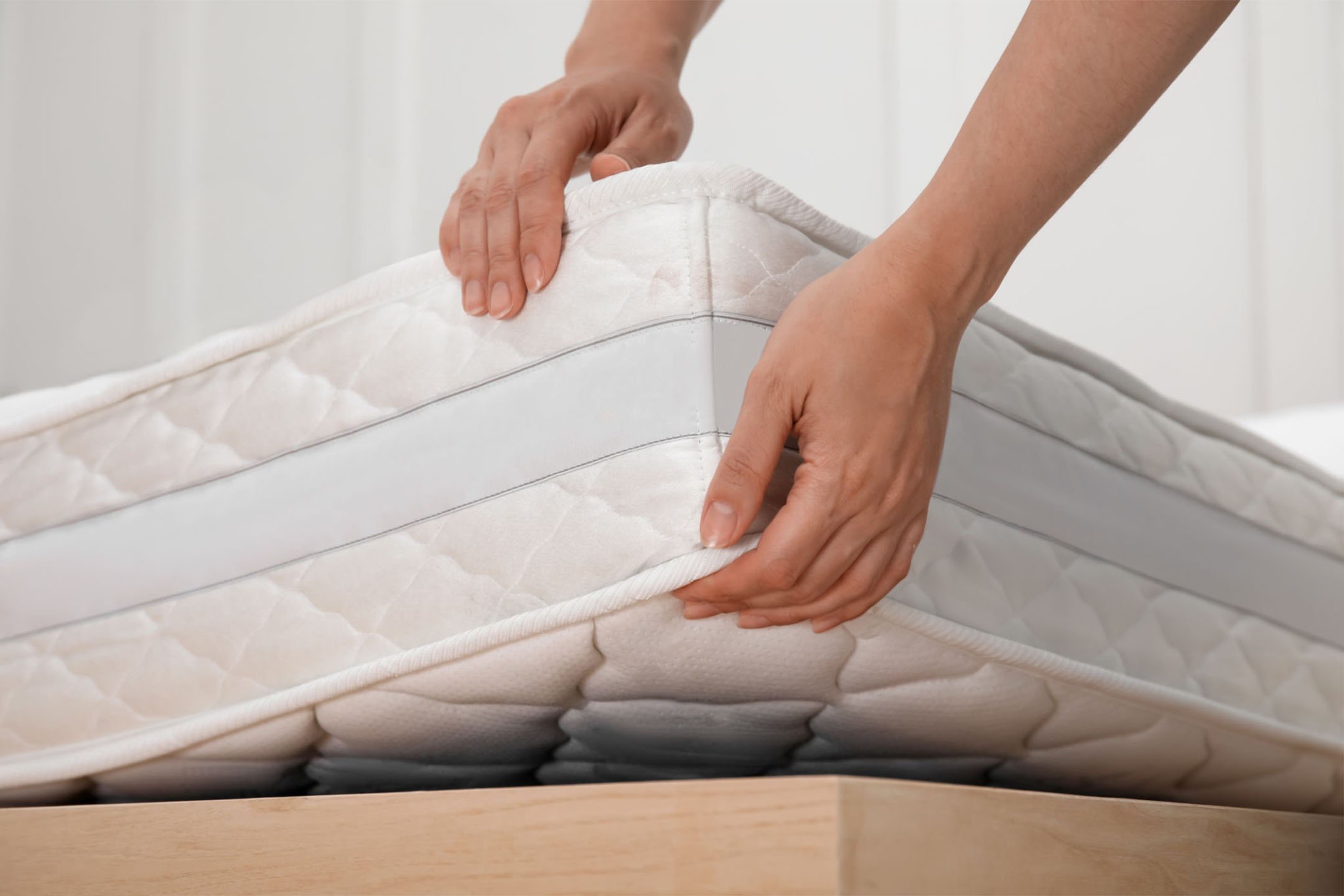Cleaning a wooden bed frame is a slightly different process to cleaning an upholstered bed. Whilst many of the steps are similar, it’s important not to cause water damage to the wood.
First of all, you’ll want to ideally remove all bedding and the mattress from the bed frame itself, to make it easier to access all areas of the bed frame. Then use your vacuum cleaner with the brush attachment to suck up any loose dust or debris, making sure you get in all the crevices.
Next up, make a cleaning solution made up of washing up liquid or a specialist wood cleaner with warm water and grab a clean cloth. You’ll want to dip the cloth into the cleaning solution and make sure to wring out any excess water. This is important because you don’t want to use lots of water as you’ll run the risk of the wood absorbing water and potentially causing damage or warping over time.
Then use the damp cloth to clean the bed frame in a circular motion. For more stubborn stains, use the wet cloth to dab the affected area first, then use a separate dry cloth to wipe the area clean afterwards.
Once the bed frame is clean, be sure to wipe it down with a dry cloth to remove any moisture that may remain, then give it time to air out and fully dry before you put the mattress and bedding back onto the bed.
As an extra step to keep your wooden bed frame looking its best, you could also polish and/or even wax your bed frame before putting the bedding and mattress back. This would give your bed frame a more polished sheen and is fairly easy to accomplish. Simply put a small amount of polish or wood wax onto a new clean cloth and gently rub it into the bed frame, always making sure you follow the product instructions.
 Free Fabric Swatches
Free Fabric Swatches


